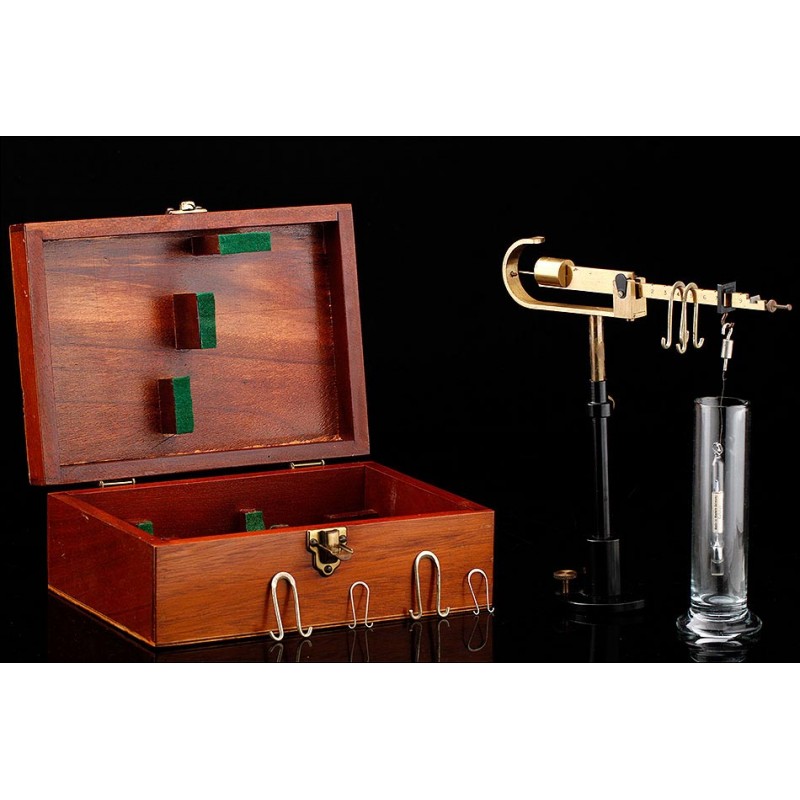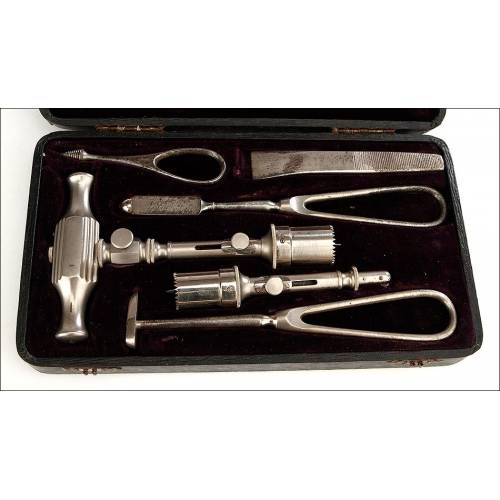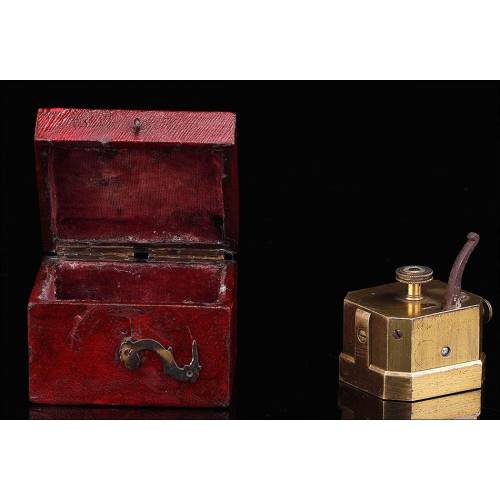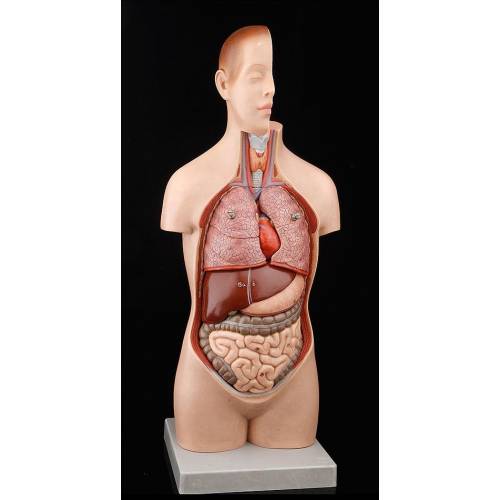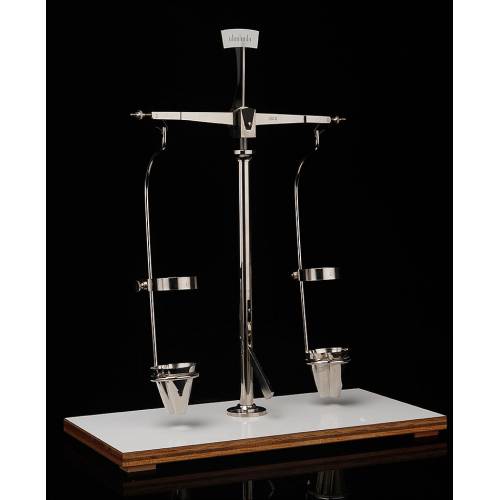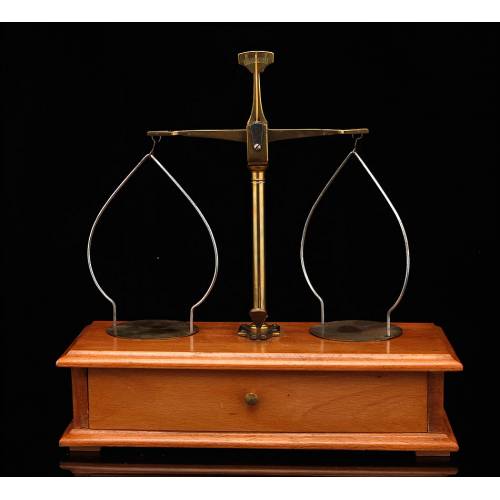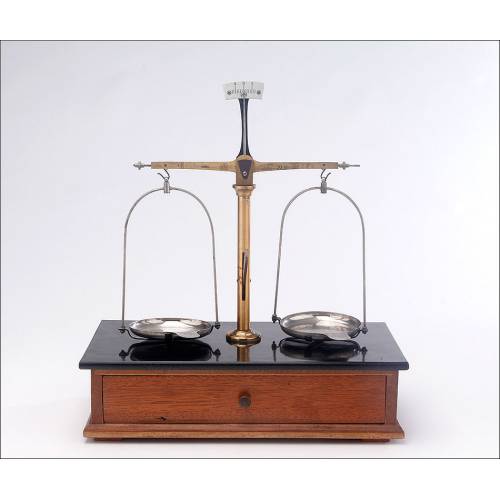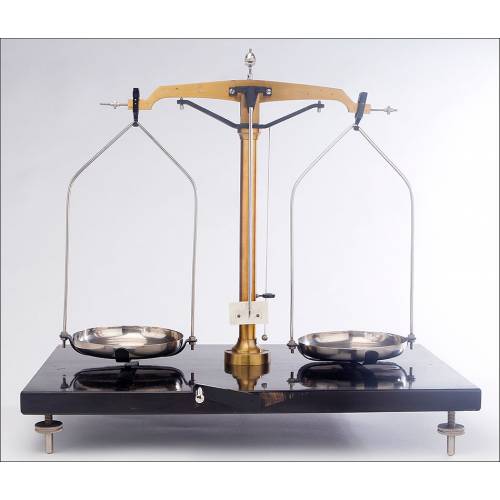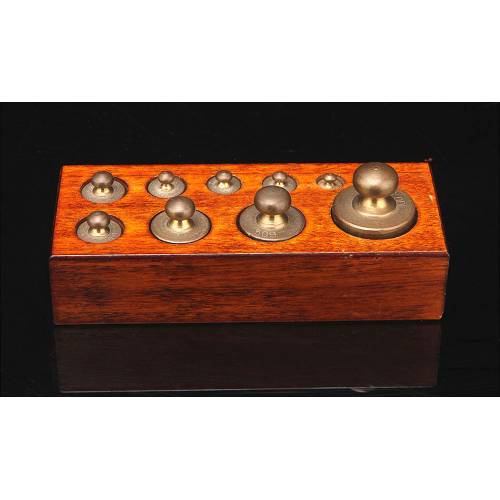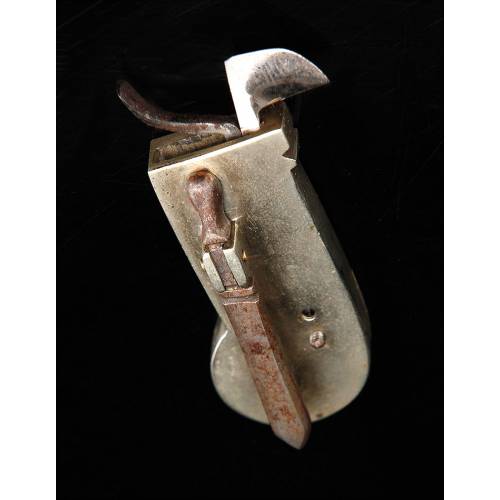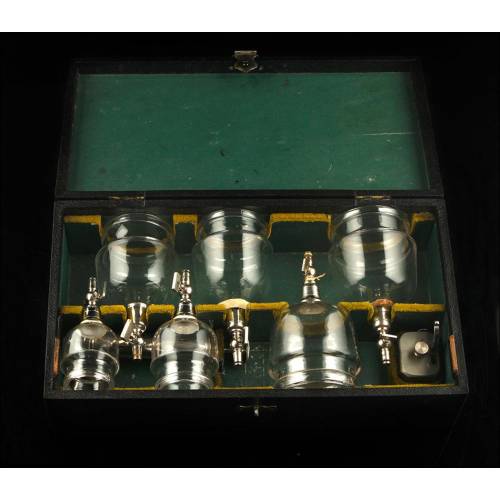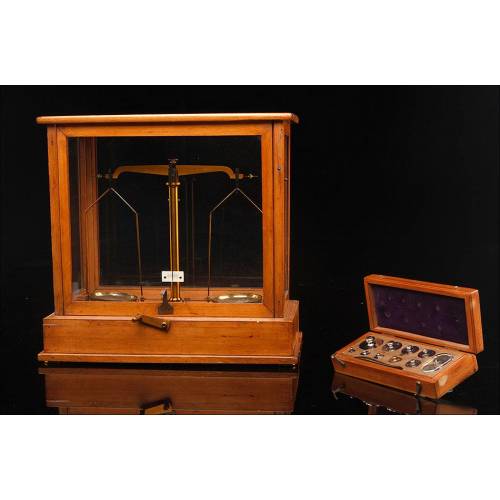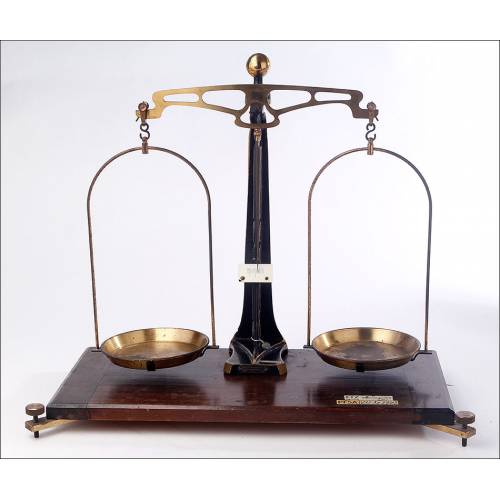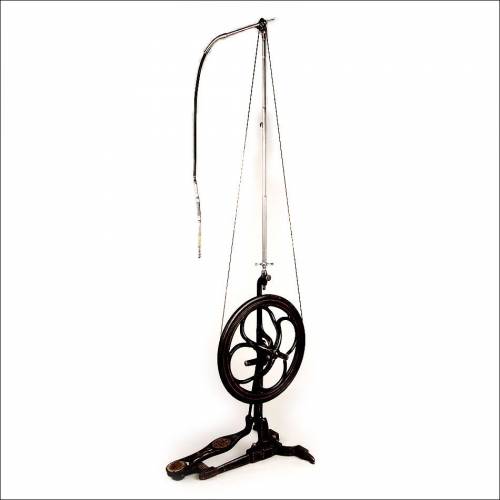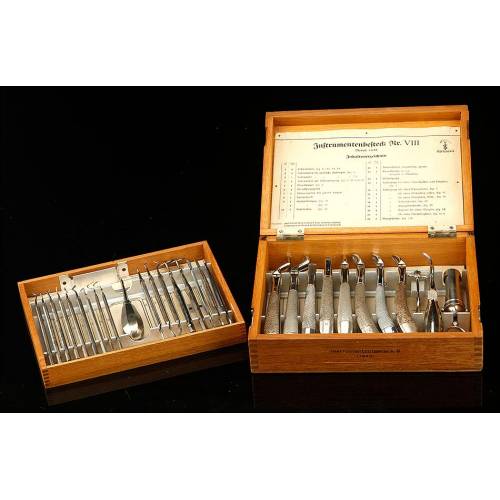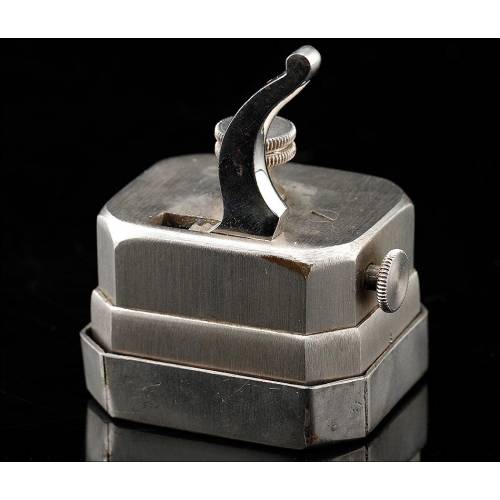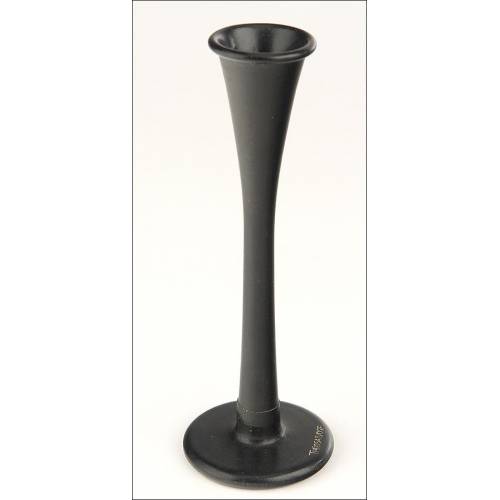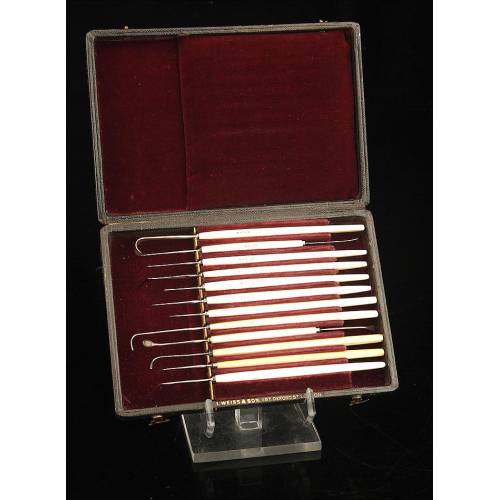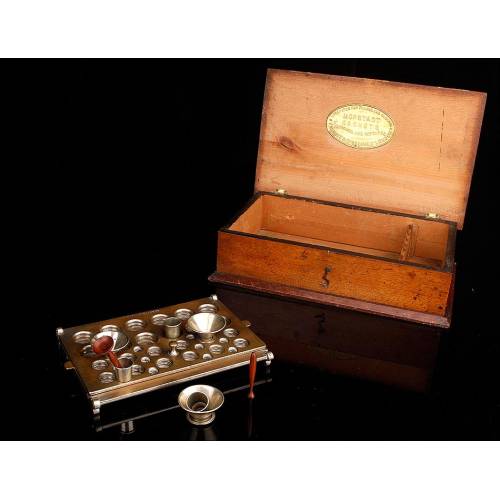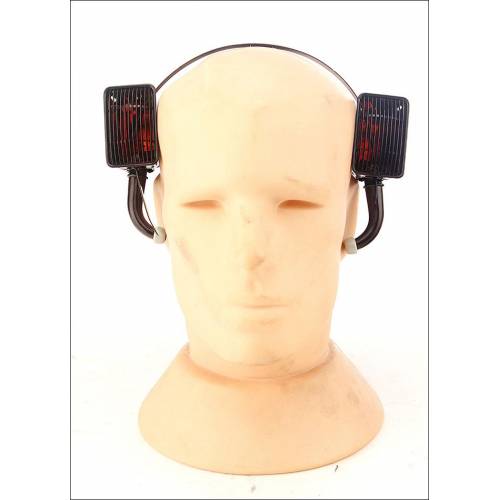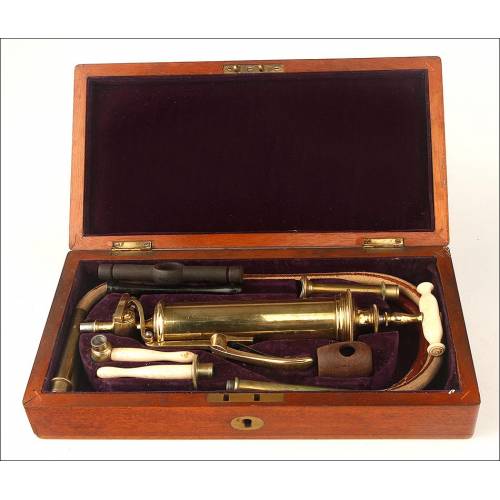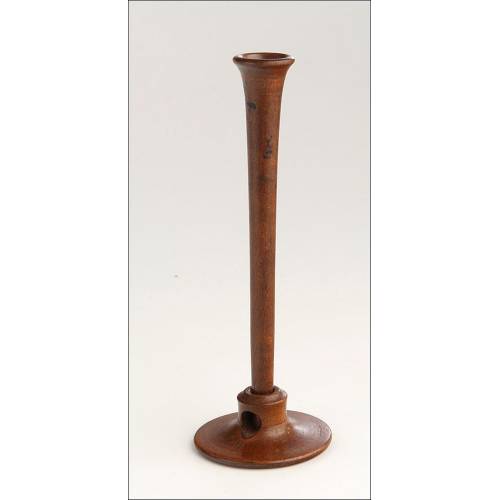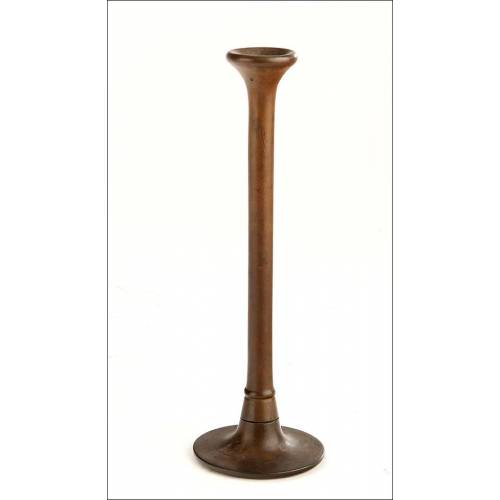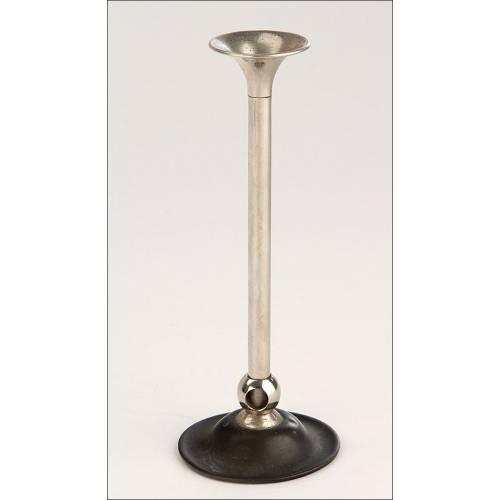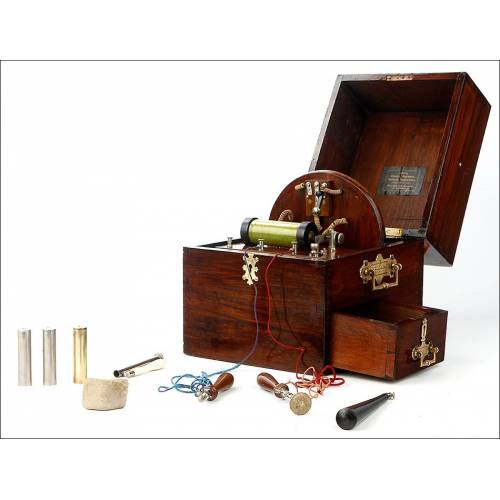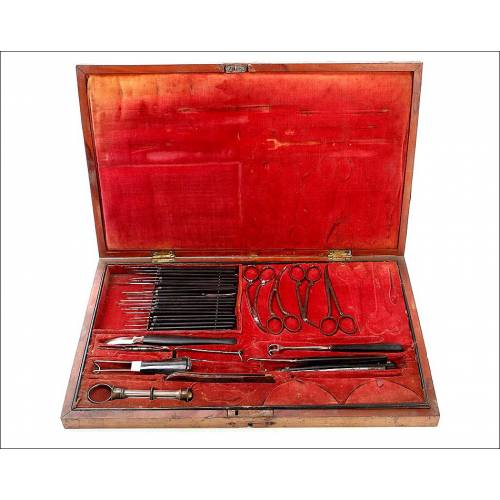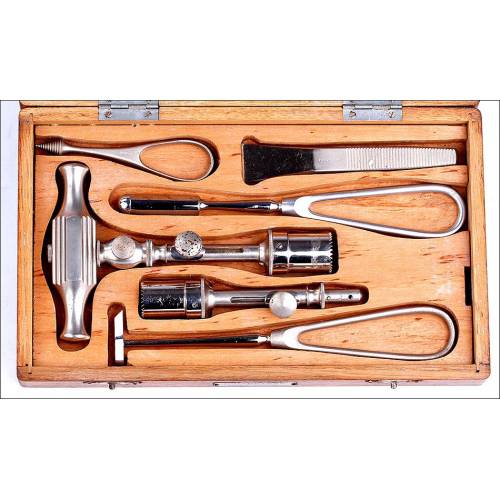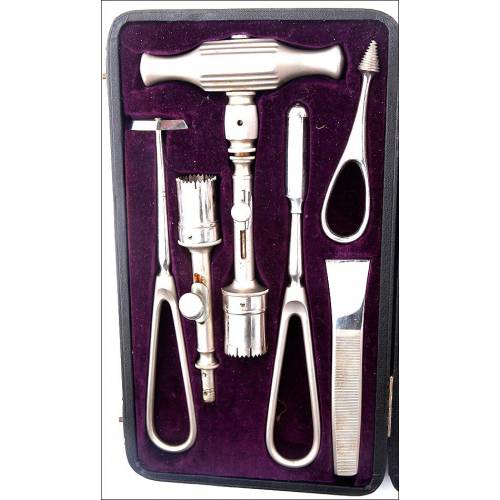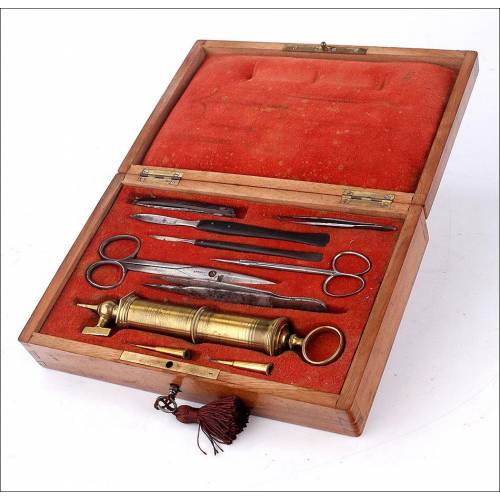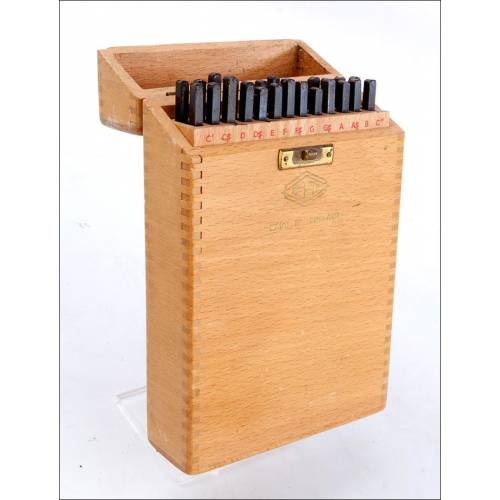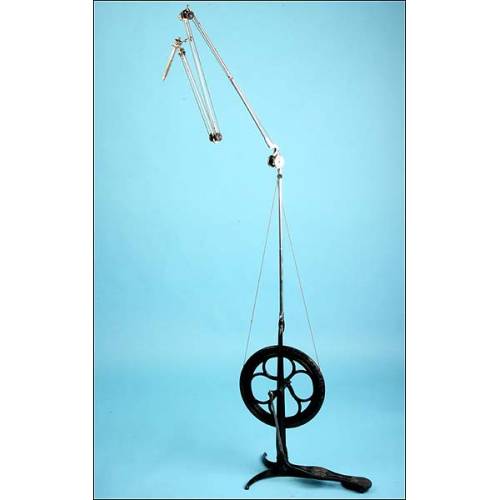A-638
Westphal Balance, 1930s
Westphal balance for measuring specific densities of liquids. England, 1930's. In mahogany case.
Sold!
Amazing Westphal balance for determining specific gravities of liquids. This wonderful instrument was made in England in the 1930s and has survived to our days in excellent condition and working order. This curious balance for scientific use comes in its original mahogany case and is accompanied by a series of accessories. Inside the case there is also a paper sheet with typed instructions and a handwritten note indicating that for determining the specific gravity of a solution, the reading must be multiplied by the density of water.The Westphal balance was invented in 1932 by German chemist Carl Friedrich Mohr. It is also known as Mohrs balance after its inventor. They are designed to read the density or specific gravity of liquids. At first these instruments had a tray method that was later replaced with an adjustable arm counterweight by Dr. Westphal. The balance operates by suspending a glass tube with a mercury thermometer in it into a sample of the solution whose density we want to know. The tube is suspended via a thin platinum wire. The system is based on the Archimedes Principle and is balanced by horseshoe-shaped counterweights. This instruments operation system is quite ingenious and very precise. The balance can determine the specific gravities of liquids just like the day when it was made, more of 80 years ago. The instrument can be disassembled in order to store it into the original case, made of lovely mahogany wood and also very well preserved.This great Westphal balance is perfect to adorn a chemists study.Measurements: Width: 9 in/13 cm. Height: 8.6 in/22 cm. Box: Width: 8.6 in/22 cm. Height: 22 in/17.5 cm. Depth: 3.7 in/9.5 cm.

